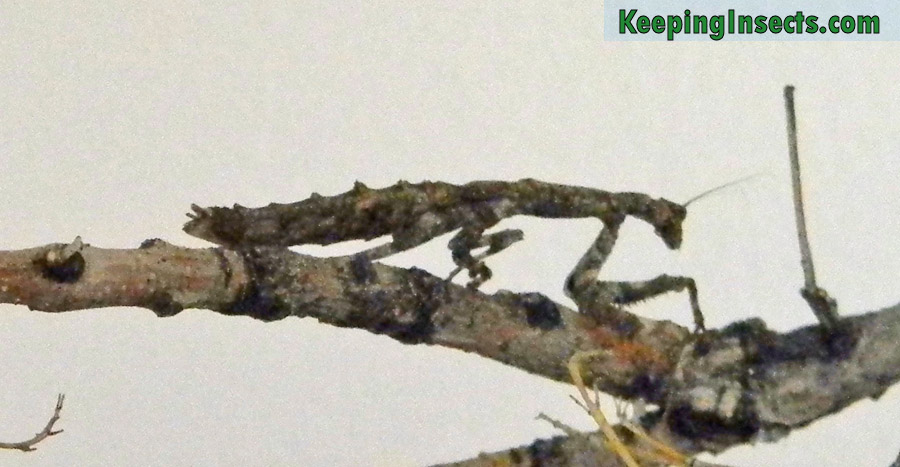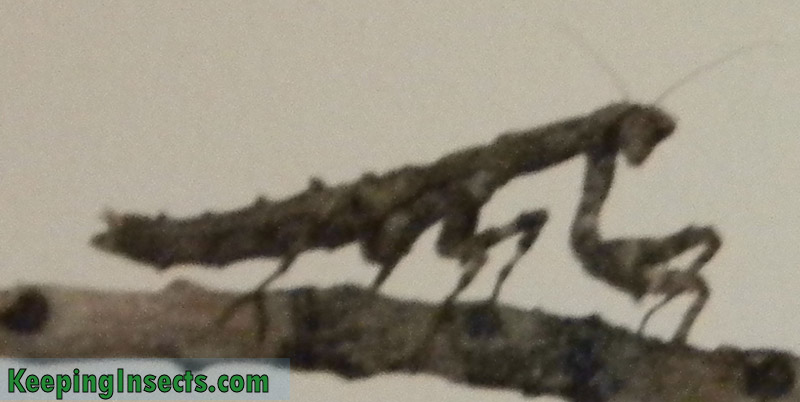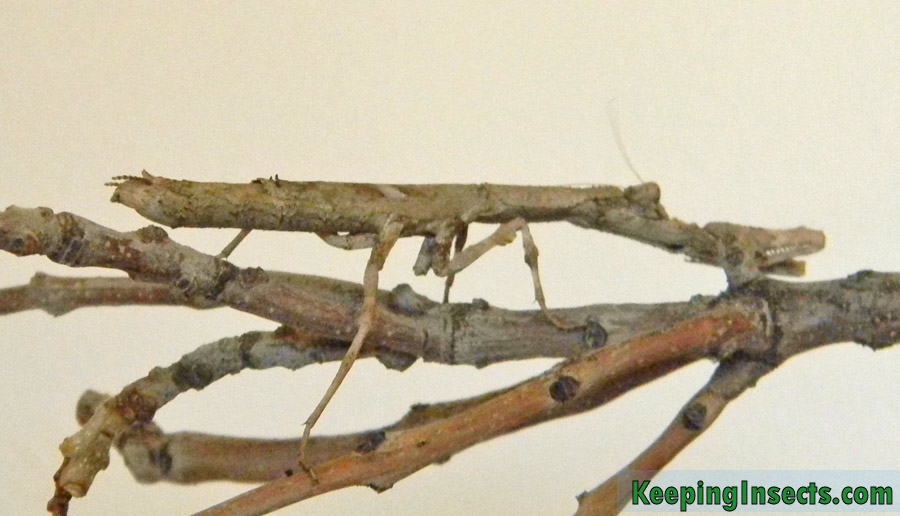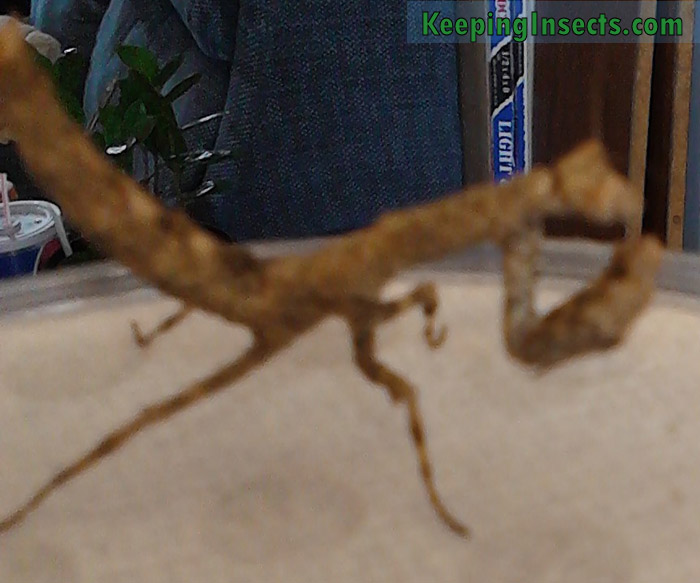I used to keep Popa spurca mantises as pets, but I never made pictures to show here. Now Derrick Bell send me a message asking which species of mantis he has at home. And it turns out to be Popa spurca, definately. And he is so kind to allow me to publish his pictures here.
Category: Species
Meet the Case Moth
I got another question in my e-mail box to identify an insect. This time from Martina Stoecker located in Western Cape, South Africa. This is it:
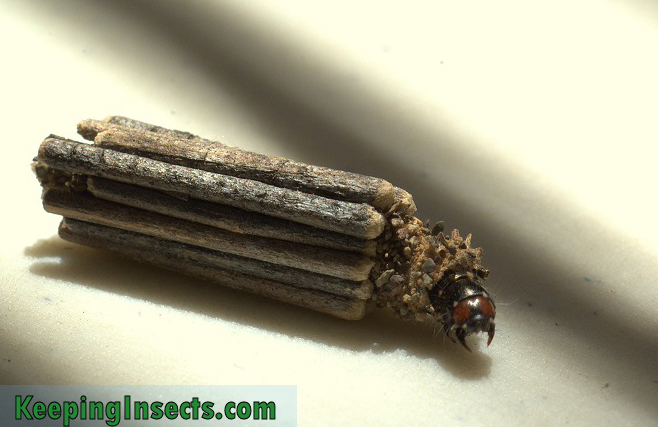
Case moth larva from South Africa – Picture by Martina Stoecker
After some research it turns out to be a Case Moth larva. And these bugs turn out to be pretty interesting! They live inside a case made of sand, plant material and debris that they gather themselves. They use silk and the materials to make a bag where they hide in. The bag or case protects them and helps them to hide from predators. Because case moth larvae have to make use of the materials they find to make their casing, they can look very differently. The one on the picture has gathered quite a few small sticks to make a casing with horizontal lines. Very fashionable! Especially with the sandy collar area.
Other common names for case moths are bagworms. They belong to the family Psychidae. There are around 1400 species of bagworms and they occur all over the world. Only the larvae wear the distinctive bag, after pupation inside the bag a small moth emerges. The colors, size and host plant differs greatly between the species.
The picture is made with: Pentax K200D, macro lens Cosina 100mm, F13, 1/25sec., ISO500 by Martina Stoecker.
Empusa sp. male – Italy
The following mantis has been photographed in Italy, Europe. The sender is wondering which species it is. Let me tell you it’s really hard to determine a species through a photograph. So which this animal I can only be relatively sure its a Empusa sp. What I do know for sure is that its an adult male. Adult because of the wings and body type and male because of the large and beautiful “feathered” antennae. What a beautiful mantis with the green wings and brown speckled body. Truly a expertly camouflaged animal.
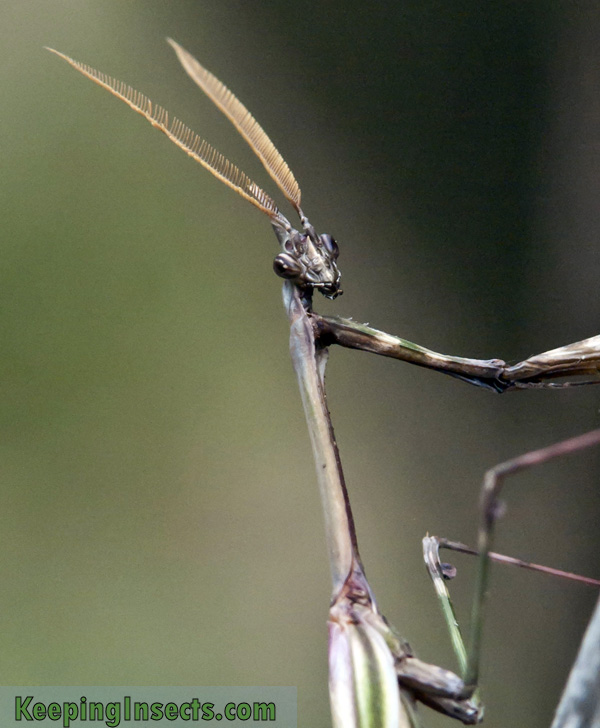
Empusa sp. male from Italy
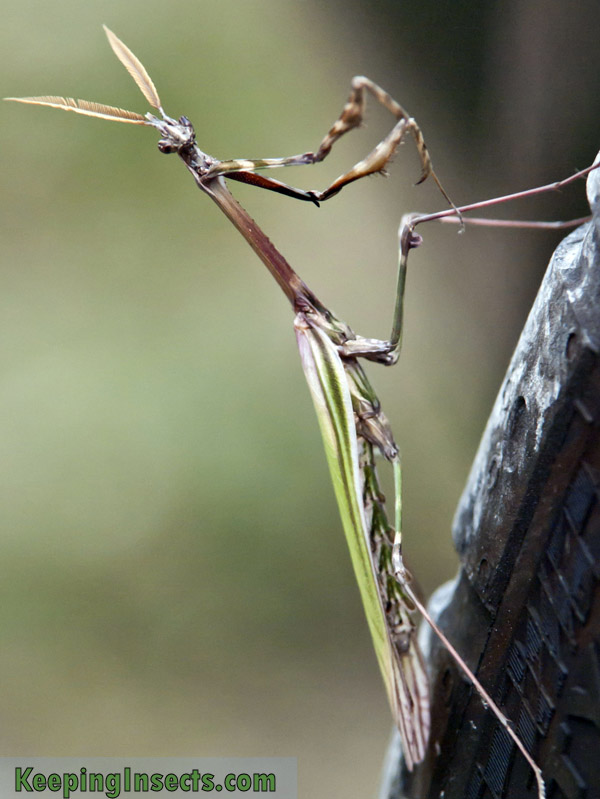
Empusa sp. male from Italy
Hickory horned devil
I got a message from a visitor of this website asking if I know what could be up with this caterpillar he found. He attached some pictures, and I couldn’t believe my eyes! I had never seen such a creature! He mentioned it was a Hickory horned devil caterpillar. Check it out:
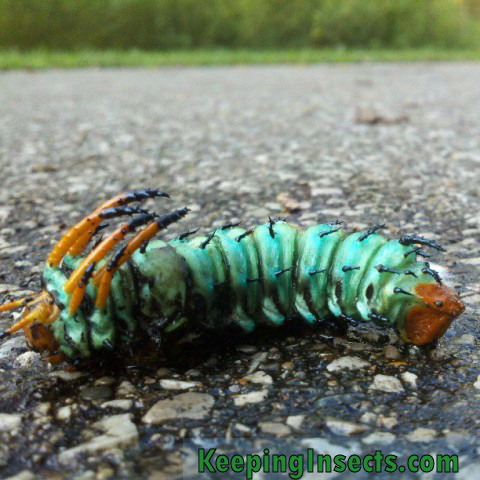
Hickory Horned Devil – picture by Blaine Booher
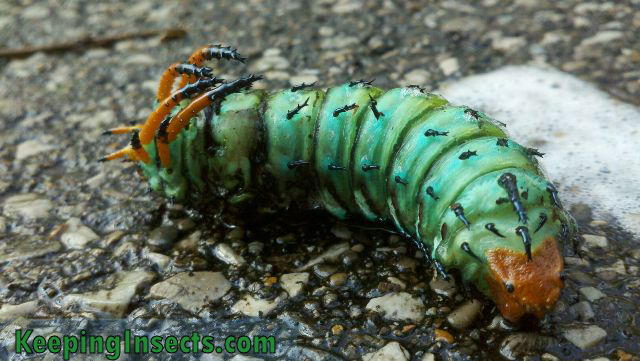
Hickory Horned Devil caterpillar on the street – picture by Blaine Booher
It’s the largest caterpillar species in North America, growing to about 6 inches. Right now they are leaving their trees to dig a hole in the ground where they will pupate. As a pupa they will survive the winter to emerge as a regal moth next spring. Hickory horned devils are greenish blue in color with large orange spikes near their head and smaller black spikes all over their body. When they are born they are completely black but already have their spikes. They are completely harmless to humans.
The Hickory horned devil is more beautiful on this -a bit dated- video:
Ants as pets
Always wondered if your own ant nest would be fun? I just added a new page to this website describing how to take care of an ant colony and how to build your own formicarium (ant nest).
You can also read all about ants, like their genetic system and how they work so well together.
Here is the link: Keeping Ants as Pets
Please let me know what you think, you can contact me through the contact form.
Atlas Moth caresheet added
Today I added the caresheet for the Atlas Moth Attacus atlas. This is one of the largest moths in the world and they are a popular butterfly to keep as a pet. The life cycle is fascinating while the keeping and caring for this species is not hard at all. The caterpillars eat many kinds of leaves and are easily kept at room temperature. And of course best of all: both the caterpillar and the moth are simply stunning! Their beautiful color and weird shapes make them look amazing.
To read more about this species, check out the caresheet HERE!
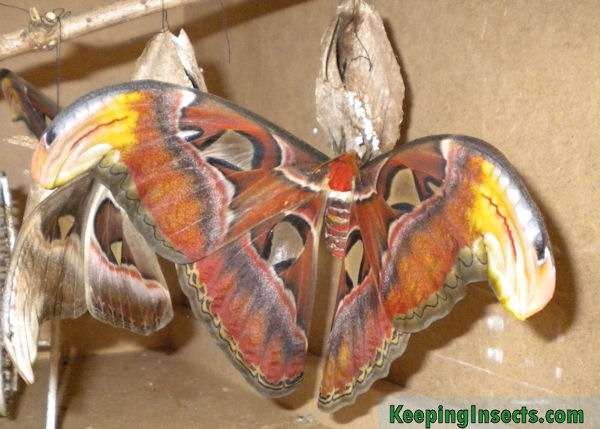
A recently eclosed Atlas Moth female
Readers Question: What is THIS?
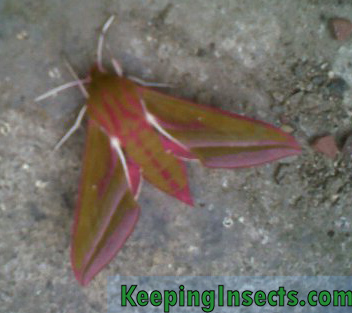
The mystery bug: elephant hawk moth
Today I got an e-mail from Daryl, asking if I could identify a bug that he found in central Scotland. He thinks it could be an exotic bug, because of its bright pink appearance. Sure, I’d like to see it! So on the right of this page you find the picture. A quick search in my entomology book gives the answer to the identity of this mystery guest: This beautiful pink and yellow moth is an Elephant hawk moth (Deilephila elpenor). It is native to Europe, Britain, Ireland and it range extends all the way to India and Japan.
Thank you Daryl, for sending me the picture and allowing me to post it on this website. If anyone else has a picture of a bug they would like the name of, please send me a message via the contact form.

